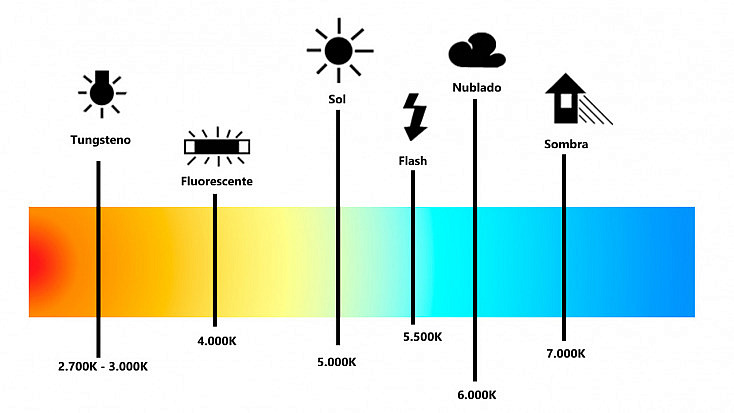BRIGHTNESS AND LIGHTING: HOW POWERFUL MY LED STRIPS SHOULD BE
Did you know that light is emitted in lumens? That means that the more lumens an LED emit, the more it will illuminate a room. So, the question you should answer is: how big is my room and how many lumens will I need to light it?
Light is the measure of brightness as perceived by the human eye. Due to incandescent lighting, we are all used to using watts to measure the brightness of the light. Today we use lumen. The lumen is the most important variable when choosing which LED strip of light to look at. When comparing the light output from one strip to another, keep in mind that there are different ways of saying the same.
The questions you should ask are “Lumens why? By foot, subway or reel? How long is the reel?
Different projects require a certain amount of brightness to achieve the desired appearance. Our advice is to always go brighter than necessary and add a dimmer. Operating your LEDs below their maximum power and brightness can also increase the service life.
Here are some reference figures, depending on the type of surface you are lighting up:
- 20 lumens / square feet for normal lighting (floor).
- 30 lumens / square feet for tables and counters.
- 50 lumens / square feet for reading and other tasks.
Example area: Surface type Estimated lumens required
- 15 x 20 feet (300 square feet) Room (floor) 6,000
- 4 x 4 feet (16 square feet) Dining Table 480
- Bedside lamp 3 x 3 feet (9 square feet) (reading) 450

Of course, you should combine the lighting levels in the rooms where you use different areas for different purposes. Therefore, if the example in the previous room has its 5 × 3-foot computer desk in one corner, the room (300 square feet) will need about 6,000 lumens, with an additional 750 lumens for the desk (15 square feet).
If the walls, furniture or other surfaces are particularly dark colors, you should increase the brightness of your lights. And your own preferences are also important. Personally, I prefer things to dim down a bit more, but if you want more light, you'll want to add another 10 or 20% to the previous numbers.
Strip lights are divided into three types:
- Highlight: for functions, types, screens.
- Work / Home - for living rooms, workspaces, home lighting.
- Strong - for daylight applications.
Important notes before starting your project with led strips:
Step 1: Get a clear view! Because each project is unique, there is no all-in-one solution. Different projects require different types of LED strips.
1. What will you be lighting?
2. Where will it be installed?
3. Do you want to dim the lights or control them with a remote control or a wall switch?
4. What general aspect do you want to achieve?
5. What color do I need?
6. What materials am I lighting up?
7. Are there other lights in the area and, if so, what color are they?
2. Where will it be installed?
3. Do you want to dim the lights or control them with a remote control or a wall switch?
4. What general aspect do you want to achieve?
5. What color do I need?
6. What materials am I lighting up?
7. Are there other lights in the area and, if so, what color are they?
Color temperature

CCT (correlated color temperature) refers to the color temperature of the light, measured in degrees Kelvin (K). The temperature classification directly affects how the white light will look; It ranges from cold white to warm white. For example, a light source that has a classification of 2000 - 3000 K is considered as what we call warm white light. Warm white light looks very orange and/or yellow.
As Kelvin increases, the color will change from yellow to yellowish-white to white and then to bluish-white (which is the coldest white). Although variable temperatures have different names, it should not be confused with real colors, such as red, green or purple. CCT is specific for white light or rather, color temperature.
Important:
Be careful if the company does not indicate the light output. You will have no idea what the brightness will be until you buy them. If quality is important to you, always request the test data sheets of any company to verify your “lumen output” claims.
Using Lumen as the only comparison can be complicated! Some brands overload their LEDs to make them brighter. Unfortunately, this will cause them to fail faster and burn.


Nice blog
ReplyDeleteDont Miss Best Led lights pakistan
hello, Thanks for sharing nice blog with us. this is really very nice blog again to all thanks i am regular reader your website
ReplyDeleteled tape light
Very interesting blog
ReplyDeleteThanks for sharing
solar pathway lighting
LED strips are a fantastic and versatile lighting solution. They offer flexibility in design, allowing you to add a modern touch to any space, whether it's under cabinets, along stairs, or in creative accent lighting. The Dimmable LED spotlight is a versatile lighting solution, perfect for creating the desired ambiance in any space. As a reliable supplier, you offer top-notch products that ensure energy efficiency and longevity. The ability to dim the light provides control over brightness levels, making it ideal for both residential and commercial settings.
ReplyDeleteektalks.blogspot.com
ReplyDeleteExperience the brilliance of LED light with energy-efficient solutions. Enhance your spaces while reducing power consumption. Partner with a trusted photovoltaik anbieter to combine sustainable solar power with the brilliance of LED technology
ReplyDeleteNice Post!! LED
ReplyDelete“Thanks for the helpful info! I love how LED Neon Signs can match any personal or business style.”
ReplyDelete